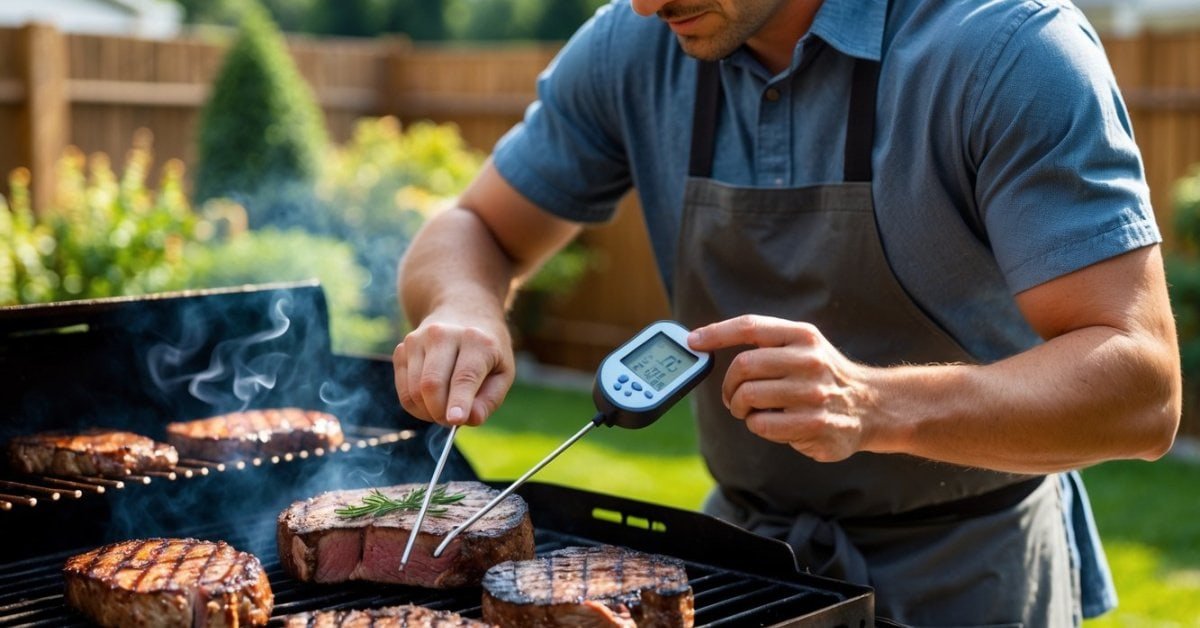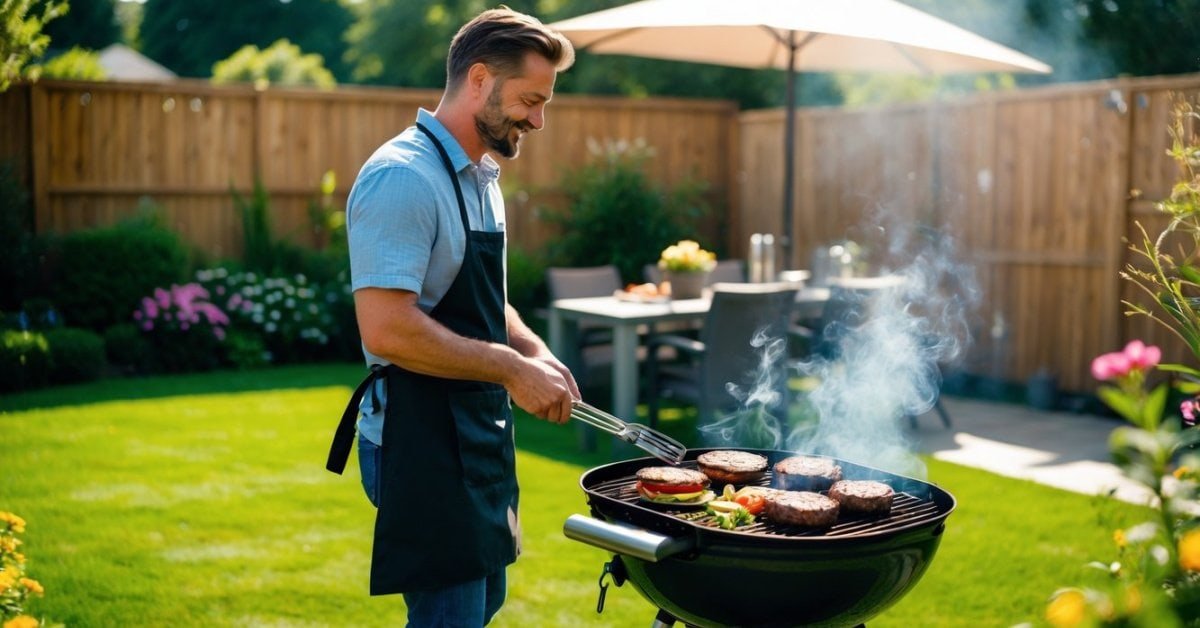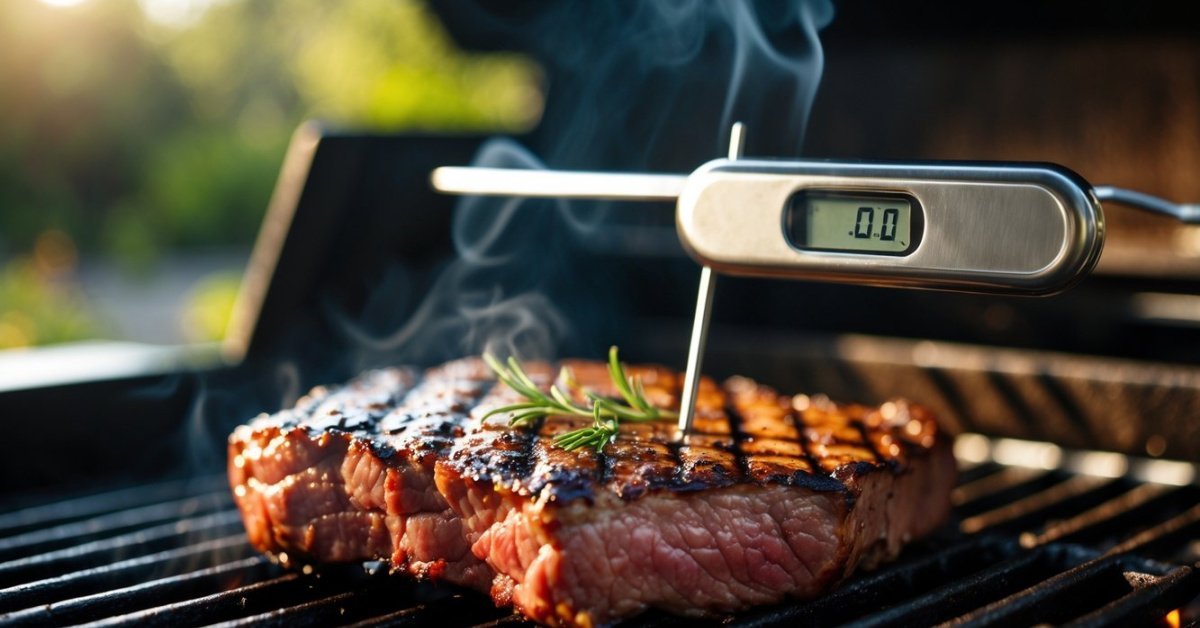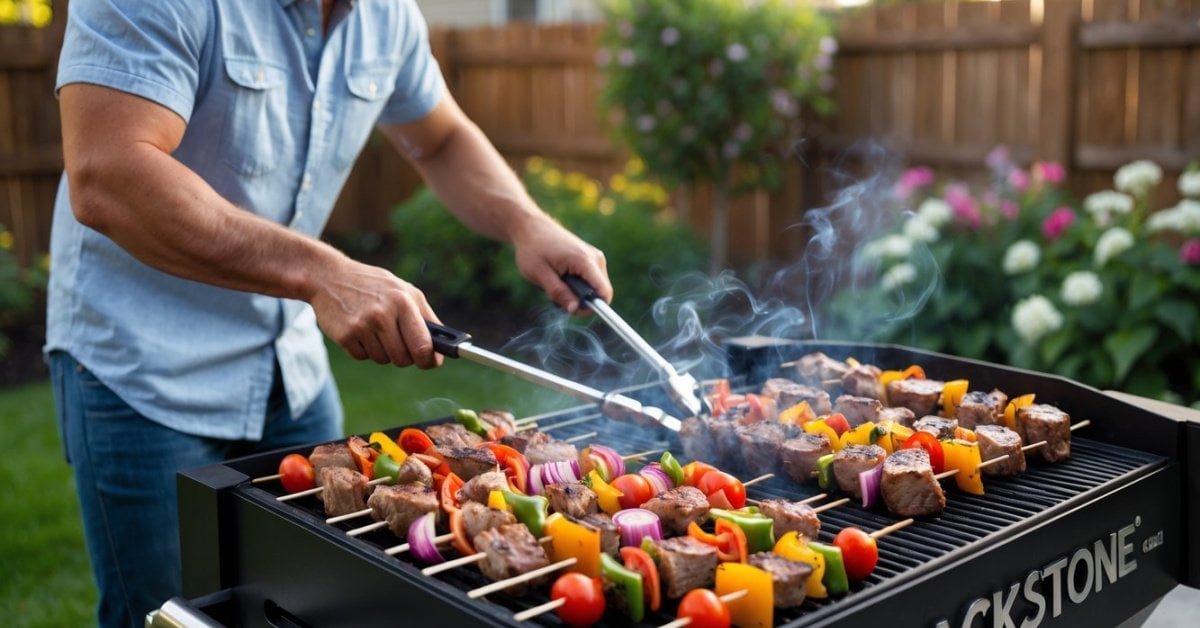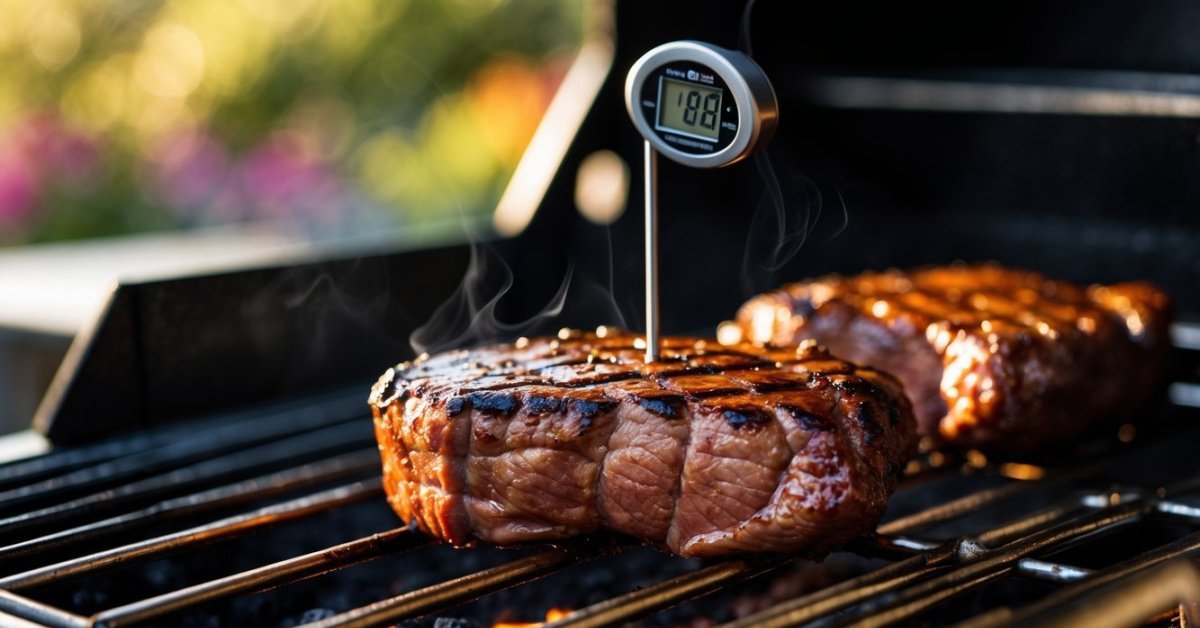Nothing beats the mouthwatering aroma of a juicy roast spinning on a rotisserie grill. But getting that perfect doneness can feel tricky if you’re just guessing when the meat’s ready. That’s where a trusty thermometer comes in—it takes the guesswork out and ensures every bite is safe and delicious.
I’ve learned that using a thermometer with a rotisserie isn’t just for pros. It’s actually simple and makes grilling way less stressful. Whether I’m cooking chicken, pork, or beef, knowing exactly when to pull it off the heat gives me confidence and better results every time.
Understanding the Importance of Temperature Control in Rotisserie Grilling
Consistent temperature control creates the difference between juicy, flavorful cuts and dried-out disappointments on a rotisserie grill. Meat proteins, like those in whole chickens and prime rib, react directly to temperature—medium-rare beef hits its sweet spot at 135°F according to USDA standards, while safe, juicy rotisserie chicken reaches 165°F. Improper monitoring leads to uneven doneness and food safety concerns.
Precise temperature readings mean I never guess if pork shoulders or briskets are done—I check with a reliable thermometer every time. Inconsistent heat from grill flare-ups or wind affects rotisserie cooking even more than standard grilling. Accurately monitoring internal temperatures reduces risk and keeps every rotation producing consistent, mouthwatering results.
Rotisserie grilling amplifies moisture retention and enhances tenderness, but only when meat never overshoots its target doneness. With proper thermometer use, I control every step and trust the process, no matter which recipe or protein I’m cooking. Accurate temperature control turns rotisserie technique into a repeatable science, not a guessing game.
Types of Thermometers for Rotisserie Grills
Thermometers play a key role in rotisserie grilling. I’ve tested many, and each type meets different needs for accuracy, convenience, and control.
Instant-Read vs. Leave-In Thermometers
Instant-read thermometers give me quick temperature checks. I use these models for spot-checks on rotisserie chicken or thick beef cuts. For example, I insert the probe into the thickest part of the meat after pausing the rotisserie spit. Digital instant-read versions display temperatures within 3–5 seconds, helping prevent heat loss from an open grill.
Leave-in thermometers monitor temperature throughout the entire cook. I rely on these for larger roasts or brisket, letting me keep the lid closed and the grill temp steady. Leave-in probes, often attached by a heat-safe cable, track temps in real time, showing me the numbers on a countertop display. This works well when meat rotates for hours, as I can check for doneness without disrupting the rotisserie process.
Wireless and Bluetooth Options
Wireless and Bluetooth thermometers offer even more flexibility. I use multi-probe Bluetooth thermometers when grilling multiple items at once, pairing them with an app to see all temperatures on my phone. Wireless remote thermometers alert me the moment barbecue pork or rotisserie prime rib hits the target doneness, whether I’m prepping sides or chatting with guests. Many models transmit from 150–300 feet, so I don’t have to hover next to the grill.
These advanced thermometers also track both meat and grill ambient temperatures. I’ve found that real-time updates and temperature history graphs help me fine-tune my recipes and nail the perfect rotisserie finish every time.
Step-By-Step Guide: How to Use a Thermometer with a Rotisserie Grill
Using a thermometer with a rotisserie grill transforms the way I cook by giving precise control over doneness and safety. I rely on these steps every time to get reliable results, no matter what cut or recipe I’m tackling.
Preparing Your Grill and Food
First, I preheat my rotisserie grill to stabilize the cooking environment. I always start by cleaning the grates and rotisserie spit with a grill brush. When prepping meat like whole chickens or roasts, I pat them dry, then truss or tie them evenly. This step prevents any uneven spinning and keeps the thermometer from hitting bones or cavities. I insert a leave-in probe thermometer if I’m using one before I secure the meat on the spit, selecting a spot in the thickest part where it won’t shift as it rotates.
Placing the Thermometer Properly
Placing the thermometer properly means I’ll get an accurate reading, not a false high or low. I always target the center of the thickest part of the meat—for example, the breast on a whole chicken or the middle of a pork loin. I avoid touching bone, fat pockets, or the spit rod itself, since these can skew the reading. If I’m spot-checking with an instant-read thermometer, I pause the rotisserie briefly, insert the tip, and let it stabilize for a few seconds before reading.
Monitoring and Adjusting While Cooking
Monitoring temperature while cooking means I’m never guessing. For leave-in thermometers, I track the internal meat temperature on the wireless or Bluetooth display, which lets me keep the lid closed and keep heat consistent. I set alerts for target pulls—165°F for chicken, 145°F for pork loin, 135°F for medium-rare beef—so I never overcook or dry out the meat. If temperature stalls or spikes, I adjust the grill burners, add fuel, or move drip pans as needed. For instant-read checks, I test multiple spots, especially if I notice uneven browning. That way, every bite hits the mark, from smoke-kissed chicken to slow-roasted prime rib.
Tips for Accurate Temperature Readings
Getting reliable results from a thermometer with a rotisserie grill means paying attention to the little details. With years of testing and grilling, I keep a few key practices in mind to keep every brisket, chicken, or pork shoulder on target.
Avoiding Common Mistakes
Missing the core of the meat throws off temp readings. I always aim for the thickest part, steering clear of bones or rotisserie rods—these lead to heat spikes. Checking only one spot can fool you, especially with uneven cuts; I check several spots on larger pieces like whole chickens or pork loins. For leave-in probes, I keep the wire away from direct flame and the rotisserie motor to avoid melting or inaccurate readings. On windy days or when opening the grill, I let temperatures settle for a few seconds before rechecking—I’ve learned rushing this step means I miss the true temp, leaving me with dry or undercooked bites.
Cleaning and Maintaining Your Thermometer
A clean thermometer guarantees accuracy. I sanitize the probe after every use with hot soapy water or food-safe alcohol wipes, especially after checking partially cooked meats. If my thermometer’s waterproof, I rinse it briefly; otherwise, I keep water away from the electronic parts. Every few weeks, I calibrate my analog and digital thermometers using the ice water and boiling water methods—this helps me spot any drift that could mess up future cooks. I store my thermometers in a clean, dry place out of direct sunlight, so grease and moisture never build up and keep them ready for my next rotisserie adventure.
Enhancing Your Rotisserie Results with Temperature Mastery
Perfecting meat on a rotisserie grill gets easier when I use precision temperature control from the start. Every time I set up my rotisserie, I anchor my thermometer knowledge by following proven temperature ranges. For beef, I pull prime rib or tri-tip at 135°F for medium-rare, confirming in multiple locations to avoid color tricks from the spit rotation. Chicken turns out deeply juicy and safe when the thickest part of the thigh and breast both register at least 165°F—no guesswork, only thermometer readings.
Mastering temperature means I can account for weather surprises or grill quirks. On windy days in Texas, I’ve seen grill temps swing more than 30°F, threatening my results. By using a leave-in digital thermometer, I monitor those quick changes, adjusting burner settings or adding wood chips to keep heat balanced. Bluetooth models with dual probes let me keep an eye on meat and ambient grill zones together, so I don’t miss a sudden spike.
Resting the meat after it hits its target makes a measurable difference too. I track carryover cooking—sometimes the internal temp climbs another 5°F after coming off the spit. Letting brisket or pork loin rest under foil for 10-20 minutes keeps juices inside and ensures every cut is both tender and evenly cooked.
Testing thermometers across dozens of rotisserie sessions makes it clear: accurate, consistent readings separate dry disappointment from barbecue excellence. These habits bring smoky, fork-tender results, whether I’m spinning a whole chicken or experimenting with lamb. Temperature mastery turns every rotisserie cook into repeatable, crowd-pleasing success.
Conclusion
Using a thermometer with my rotisserie grill has completely changed the way I approach outdoor cooking. It takes the guesswork out of grilling and lets me focus on creating meals that are both safe and delicious.
Now I can relax and enjoy the process knowing I have the tools to deliver perfectly cooked meat every time. If you want to boost your grilling confidence and wow your guests with juicy rotisserie creations a good thermometer is truly a game-changer.

